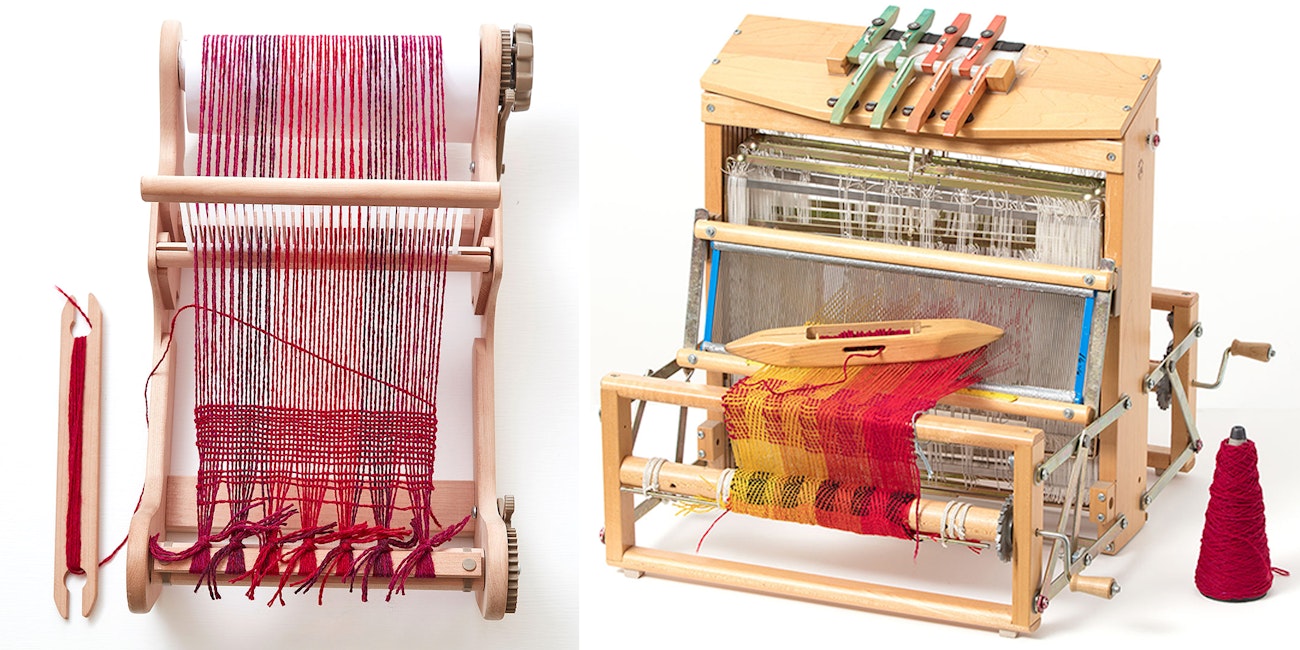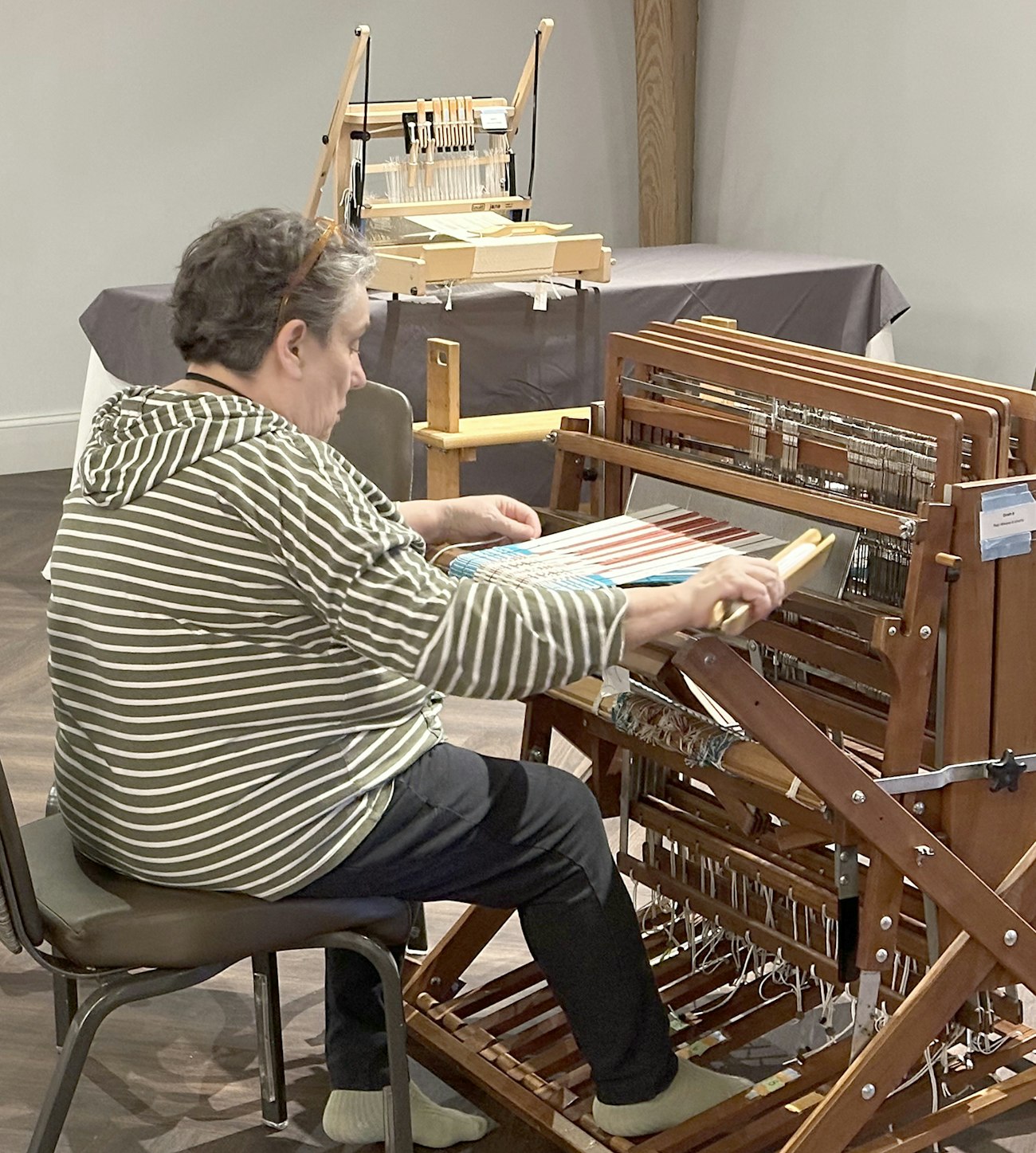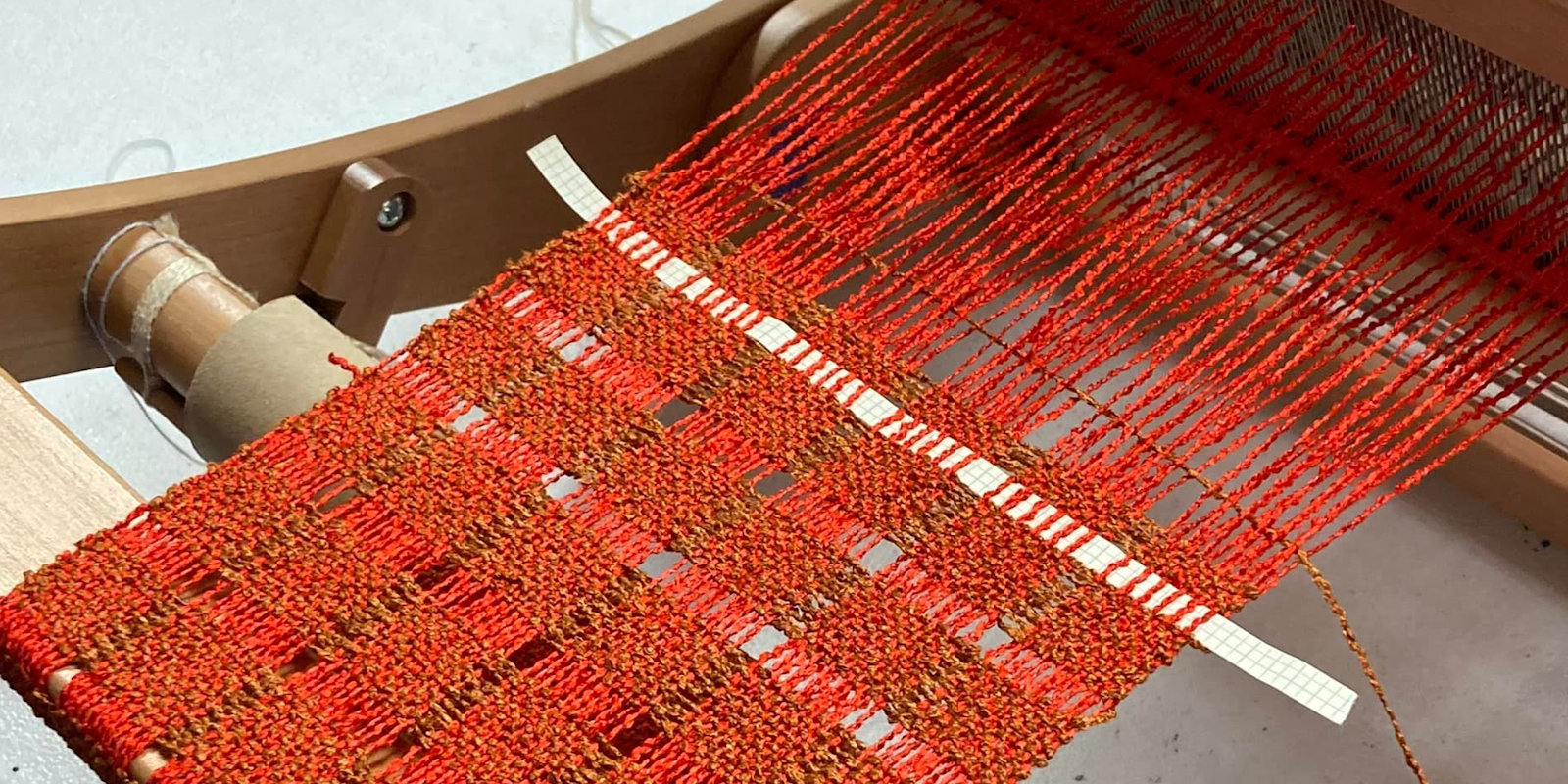Hello, weavers! If you haven’t tried multi-shaft weaving yet, our upcoming Weave Together 2026 retreat is a great opportunity for you to see what that’s like. Read on to learn more!
What’s Multi-Shaft Weaving?
So what makes a multi-shaft loom so different from the looms used by small-loom weavers? Let's start by what makes it similar: When we weave, no matter which loom we're using, what we’re doing is interlacing one group of threads (the warp) with another group (the weft). Different types of looms accomplish that interlacement in different ways, but the result is always fabric.
For example, if you’re familiar with weaving on rigid-heddle looms, you know that warps are threaded through slots and holes on a rigid heddle. Raising and lowering the rigid heddle as you weave creates sheds for weft picks and patterns form in the fabric based on the way the warp ends are arranged in the heddle. Most of the looms featured in Little Loom are designed to weave plain weave. More complex weaves require more equipment (pick-up sticks, second heddles, etc.) and/or manual thread manipulation on the part of the weaver.
 On rigid-heddle looms (left), warps pass through one or more rigid heddles; sheds are formed by raising or lowering those heddles. On multi-shaft table looms (right), warp ends are threaded through shafts; sheds are formed by raising or lowering levers attached to those shafts.
On rigid-heddle looms (left), warps pass through one or more rigid heddles; sheds are formed by raising or lowering those heddles. On multi-shaft table looms (right), warp ends are threaded through shafts; sheds are formed by raising or lowering levers attached to those shafts.
On multi-shaft looms, warps are threaded on shafts—frames that hold lots of individual heddles. As you weave, you use levers or treadles to raise those shafts and create sheds for weft picks. Patterns form in the fabric based on both the threading and the levers or treadles that are engaged for each pick. (Pick-up sticks are sometimes used in multi-shaft weaving, but they’re much less common.) By mixing and matching which shafts are lifted when, you can create multiple patterns on one threading—no hand-manipulation or extra equipment required.
 Multi-shaft floor looms form sheds using treadles rather than levers. A Weave Together 2025 attendee weaves at a floor loom in the foreground. A multi-shaft table loom sits in the background. Photo by Tiffany Warble
Multi-shaft floor looms form sheds using treadles rather than levers. A Weave Together 2025 attendee weaves at a floor loom in the foreground. A multi-shaft table loom sits in the background. Photo by Tiffany Warble
Please allow me to introduce myself—I’m the editor of Handwoven magazine, where we focus primarily on multi-shaft weaving. Easy Weaving with Little Looms editor Christina Garton invited me here to write about Weave Together 2026—our retreat for weavers of all types. It will happen March 8–12, 2026, in Loveland, Colorado, and we’d love to meet you there for weaving, community, and fun.
Try It Out
Weave Together 2026’s one-day Weave a Scarf in a Day class is just the thing if you have no multi-shaft weaving experience, but you’re curious about what it’s like. Looms are provided—you just need to walk in the door!
You’ll start off in the morning with a loom that’s pre-warped and ready to go, so you can get right to the fun of throwing the shuttle. As you work, you’ll learn the specific steps of weaving, how to change the weft yarn, and several options for customizing your scarf. You’ll learn how to remove your scarf from the loom and finish it (including making a fringe). You’ll end the day with a scarf—and you’ll be ready to move on to the next level.
You couldn’t ask for a better teacher than Angela K. Schneider to lead you through the ins and outs of multi-shaft weaving (she’s the project editor for Easy Weaving with Little Looms and Handwoven, as well as for our sister publications).
If you're already familiar with multi-shaft weaving, but love the idea of being able to weave a scarf—and not having to warp the loom first—this class is also for you! It's a great opportunity to relax in a welcoming environment where you can focus on weaving something you can wear that same day.
Other Classes and Teachers
To fill in your Weave Together 2026 schedule, we also have classes about weaving on rigid-heddle looms, pin looms, inkle bands, and tablet weaving.
John Mullarkey, tablet weaver extraordinaire, is returning to Weave Together for a third year, to teach three tablet-weaving classes.
Angela Tong is an expert on pin-loom and rigid-heddle weaving, and she’ll be teaching classes in both.
Annie MacHale will offer classes in weaving inkle bands for all levels, from seasoned veterans to those who have never even warped an inkle loom.
Sara Goldenberg White and Stephanie Flynn will be teaching classes on rigid-heddle weaving techniques including pick-up, hand-manipulation, and even krokbragd! If you’re curious about tapestry weaving, check out Sara’s single-day Intro to Tapestry class.
You can learn more about all the classes here.
Good to Know
What can you expect from Weave Together? Along with three full days of weaving classes, there will be exciting speakers, a marketplace filled with weaving and fiber goodies, and lots of opportunities for community. You’ll be eating alongside your fellow attendees, allowing plenty of opportunity to make new weaving friends—including Handwoven and Little Looms editors. Instructors will stay and eat on-site, so even if you aren’t taking a class with a particular teacher, you can sit next to them at dinner and have a fantastic conversation. It really is a great opportunity to spend quality time with talented weavers.
Worried about logistics? We’ve got you covered! Attendees will stay at the beautiful Embassy Suites, and all meals and classes will take place there. Lodging and all meals are included in the ticket price.
Want to learn more about Weave Together 2026, the teachers and their classes, and what you can expect? You can find out everything and purchase your ticket here. Space is limited and classes are first-come, first-served, so don’t delay.
We hope to weave with you in Colorado!

